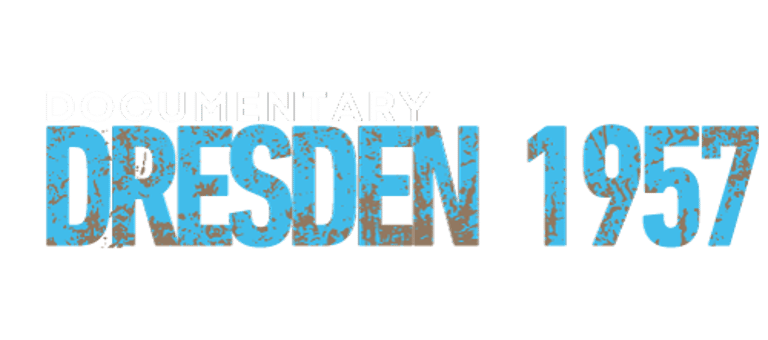Summer filming completed!
UPDATED: Highlights from our 6-week production schedule for Dresden 1957
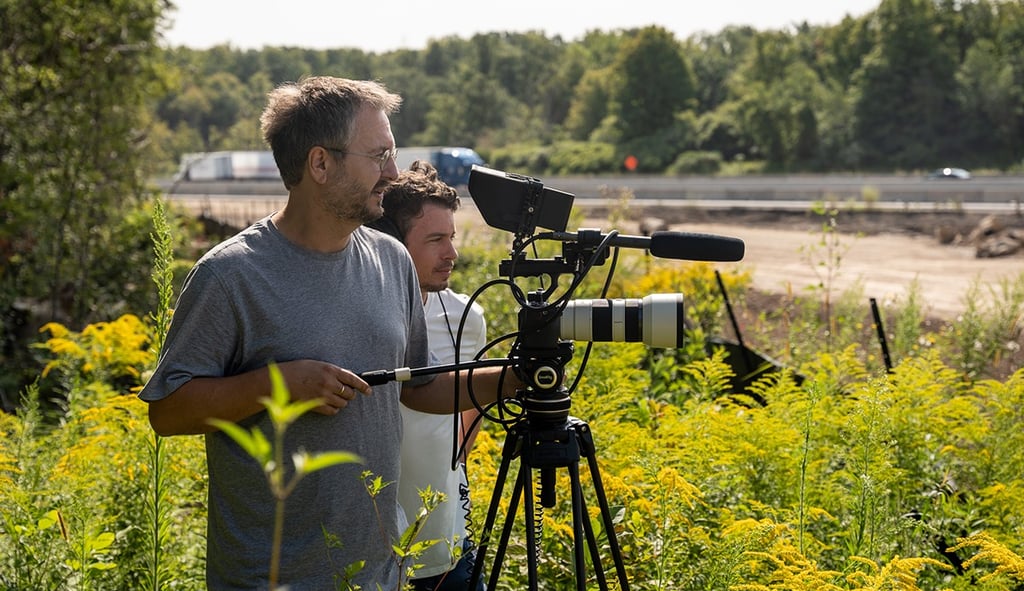

UPDATED October 16, 2024 - Thanks to your support, we were able to take a major step forward on Dresden 1957 this summer. Our summer filming schedule started On July 26 in Nova Scotia and continued through September 6. Here’s an overview of what we accomplished in those six weeks.
First, though, I want to let you know that Chris Drenth, one of our first interviewees passed away on September 17. Chris’ father, Hendrik Drenth, was one of the six men who lost their lives in the Dresden cave-in. Read more about Chris here.

Please like this video and subscribe to our channel! It's an easy way to support this project and follow our progress.
July 26-29 in Nova Scotia
In Nova Scotia we interviewed retired professor Gerrit Gerrits, who told us about Dutch immigration to Canada. We also interviewed historian and journalist Anne van Arragon, focussing on the experience for the children of those immigrants. And a big thank you to Anne for hosting us in her beautiful home while we were in Nova Scotia!
We interviewed Chris Drenth's younger brother, John, who has an almost photographic memory for details, such as the night when he first heard there had been an accident. And on our last day in Nova Scotia, we visited the museum at Pier 21, where almost all of the Dutch postwar immigrants first landed in Canada. There we had an excellent interview with historian Steve Schwinghammer.
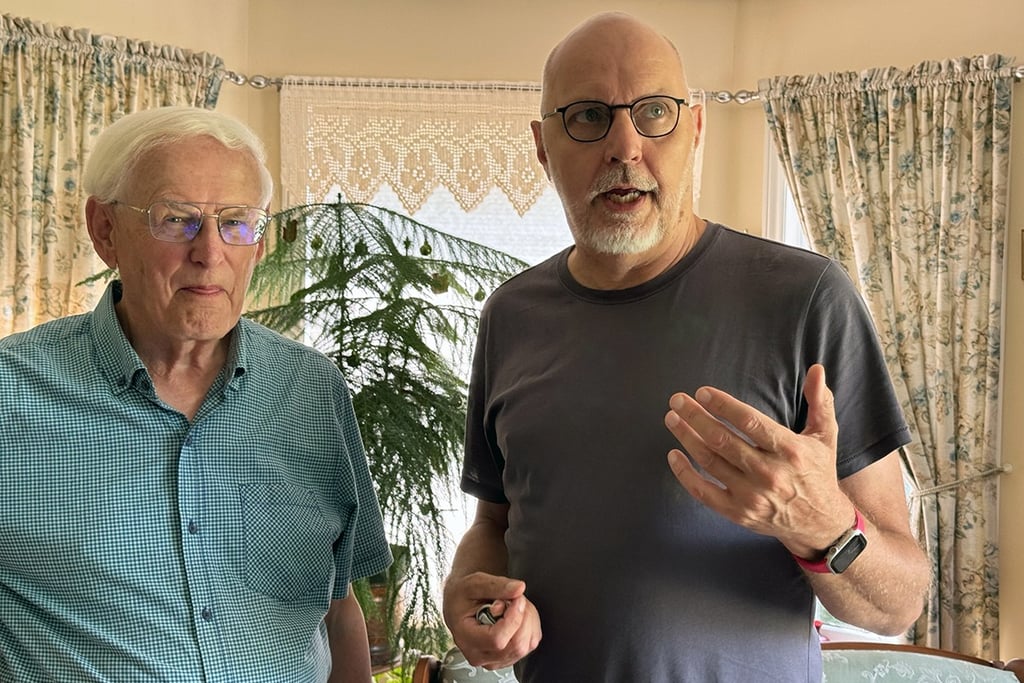

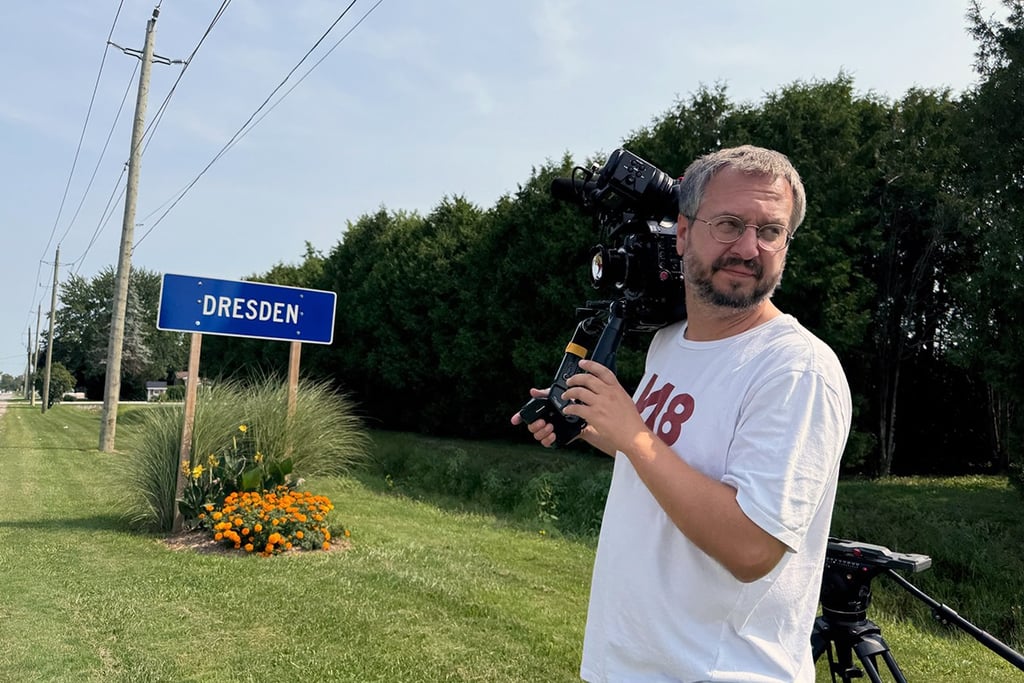

Pawel arrives in Canada
On August 8, our cinematographer, Pawel Kacprzak arrived from Poland and production went into high gear. After planning meetings and equipment tests, we shot our first interview with Pawel on August 11: retired professor Mike Chappell, who spoke about the history of workplace safety in Ontario.
We spent the following week filming in and around Dresden. On August 14 marked the anniversary of the Dresden tragedy with local residents and family members of each of the six men who lost their lives. We did this in The Old Czech Hall, the same building where the Coroner’s Inquest took place in 1957. The event was opened Rhonda Jubenville, one of the councillors for Ward 4 (which includes Dresden). and closed by Andy Cornell, pastor at the Presbyterian church next door. You can read more about this event - and watch the livestream here.
That week included research in the local archives, with the assistance of Sara Taylor, a granddaughter of the Hovius family, and help from Doug Goodreau, a Dresden resident.
Pawel filming in Dresden in early August, 2024.
Interviews
The week of August 19 was all about interviews. We did a follow-up interview with my mother, Yvonne Philpott, and shot footage of her looking through my dad’s papers (she’s the person who found his Dresden diaries and other materials). We interviewed Neil Freeman about the history of the Ontario Water Resources Commission, which financed the Dresden waterworks construction in 1957.
We also interviewed Enzo Garritano, CEO of the Infrastructure Health and Safety Association, which guides workplace safety training and standards in Ontario. In 2022 I heard Enzo on the CBC talking about a trench collapse in Ajax, Ontario in which two workers had died. That interview spurred me to make this film: for the first time I realized that there were people who cared about this issue - and that it was still an issue today.
On Thursday we interviewed Mary Jane Zubick, whose grandfather was Jan Bremer, and Janet Drenth, the youngest child of Hendrik Drenth.


Joe (and me behind the camera) during the interview with Janet Drenth.
Working from London
The last three weeks of the summer we stayed with Sadie (nee Hovius) and Arnold Oldewening in London, the geographic centre of all the areas we needed to film in. We couldn’t have filmed as much as we did without that and we are grateful to Sadie and Arnold for their generosity. We even turned their basement den into a film studio to shoot some of my narration segments!
Landscapes and Lighting
The week of August 26 was mostly focused on filming locations. Southwestern Ontario is incredibly beautiful and I want to make sure that the landscapes in which this story happened are a big part of film. The person who made that possible is Pawel, our cinematographer. He found ways to capture the majesty of our rolling farmlands and tiny details that make it magical. Dresden 1957 is a powerful story, but as a film it should also be beautiful.

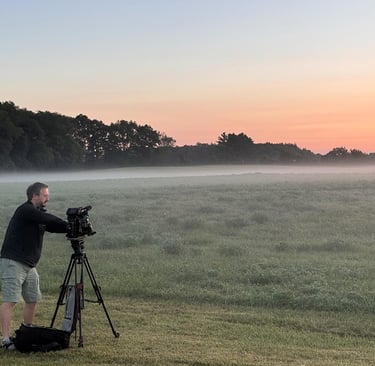
Capturng the early morning light.
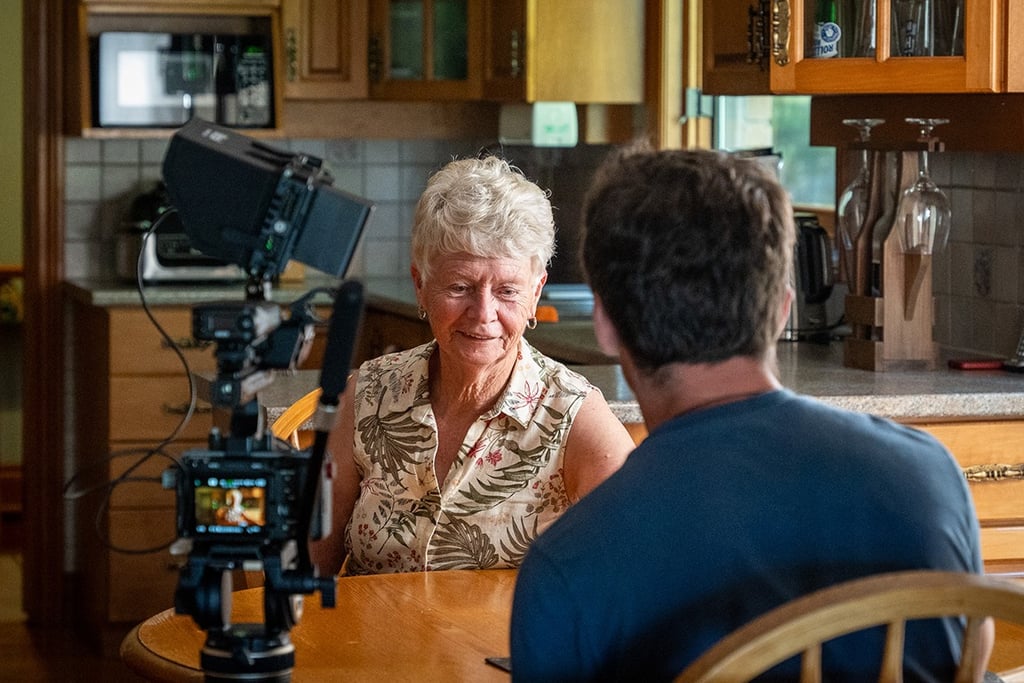

Joe chatting with Ena Vandenbrink while setting up for her interview.
Pawel also helped us to evolve how we were filming interviews. I think Joe has done fantastic camera work on our previous interviews but with Pawel, we were able to evolve that even further. One that stands out is our interview with Ena Vandenbrink, whose uncle was Dirk Rijksen. We filmed Ena at her kitchen table, but what looked very ordinary scene at first was transformed by Pawel’s beautiful lighting.
Recovery workers
We’ve interviewed a number of witnesses with firsthand experience of the cave-in, but until recently we had not found a single person who had been personally involved in the grim task of recovering the bodies. That changed this summer when in the same week we got two different contacts: Jim Coyle and Wilma Wellman, whose husband Glenn was in the pit for the entire 38 hours of the operation.
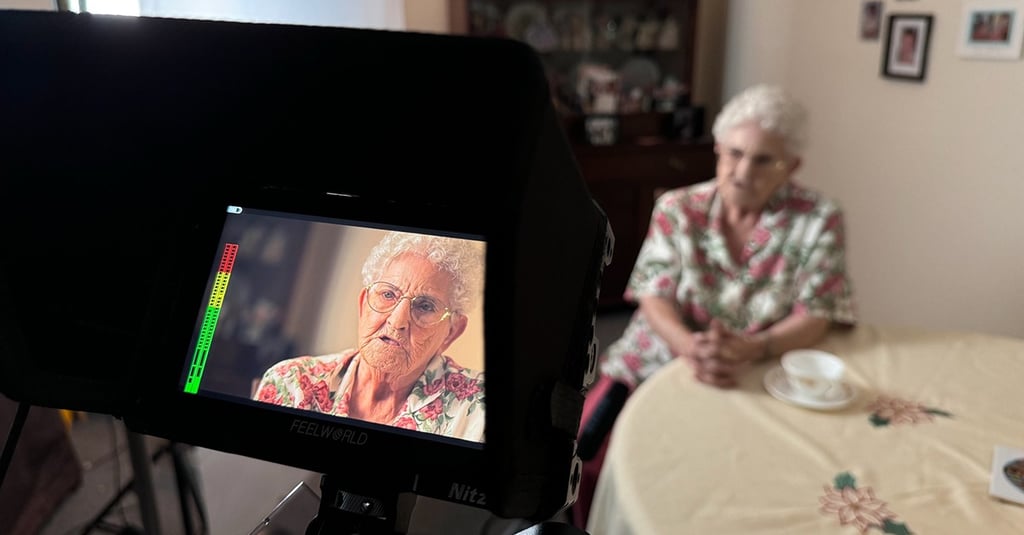

Interviewing Wilma Wellman. She said her husband Glenn was "white as a sheet" when she went to check on him during the recovery operation.
Jim and Glenn were both early on the scene, digging frantically and hoping against hope that they might still find someone alive. Wilma told us that her husband had dreams about it for the rest of his life.
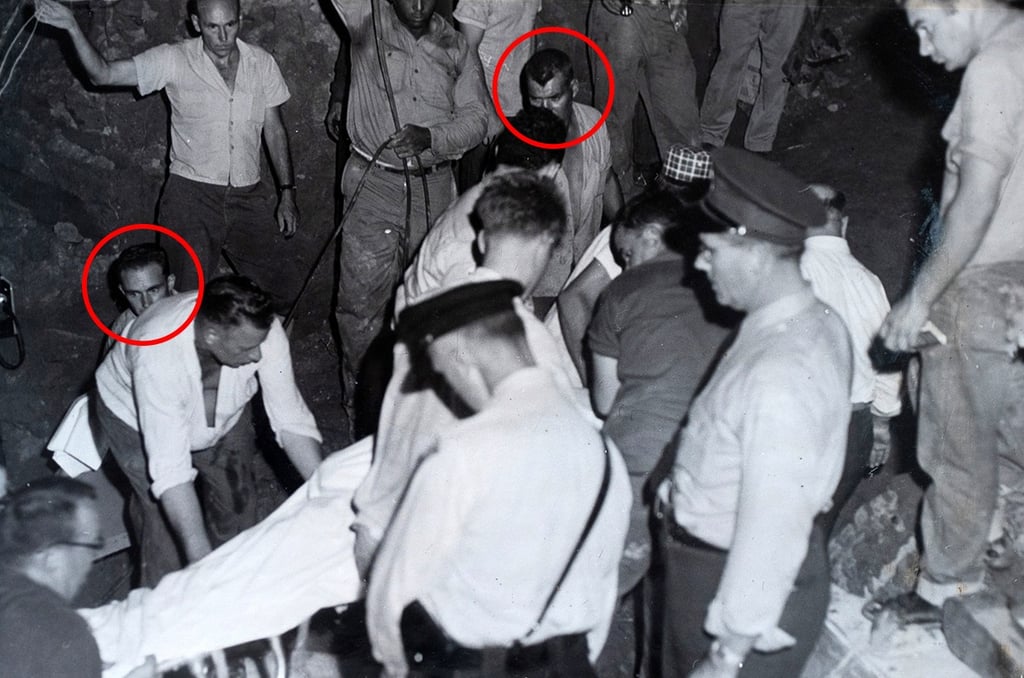

Jim Coyle (lower left) and Glenn Wellman (centre) were captured in the same photo, as the first body (Dirk Ryksen) was being removed from the pit:
Old Cars and Construction Sites
Our last production week saw us filming vintage cars, including a 1951 Meteor, the same model and color scheme as the car that the Hovius family bought in 1957, and a 1951 Ford panel wagon, similar to the vehicle which the men rode in when travelling from Aylmer to Dresden. We’ll use this footage to recreate moments in the story.
A big thank you to Bill Purdy and Kathleen McKeem for the Meteor, and to Butch Boccioletti for the panel truck
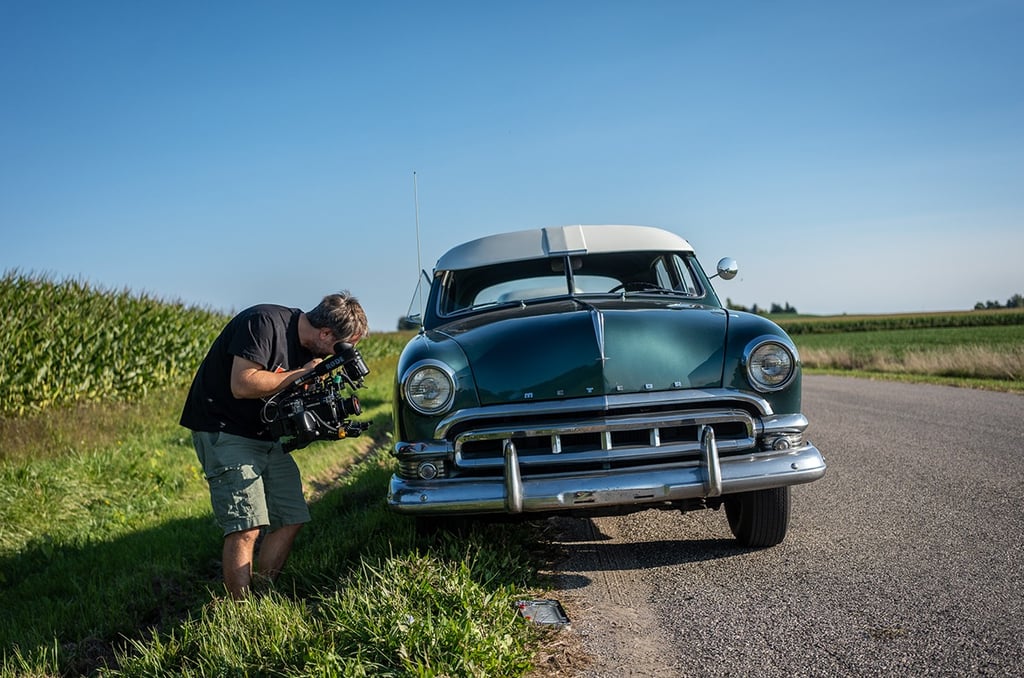

Pawel filming details on the 1951 Meteor
We also visited two construction sites to film excavations and earth moving equipment. We’ll use these shots for artistic images of earth, close-up shots of work, like digging, and to show the Ontario that was built in the 1950’s is still being built today.
We wrapped up our summer production schedule on September 6 with an excellent interview with Mike Diez d’Aux, a geotechnical engineer who explained soil mechanics and the geological factors involved in the Dresden tragedy. A big thank you to Jory Hunter for helping to organize that and one of our construction site shoots!
Moving forward with “Dresden 1957”
All this is just a taste of what we did! None of this would have been possible without your contributions and we are grateful. We have now shot almost 40 interviews and we have about 95% of the film “in the can.” As we sort through the footage we’re ready to turn our attention to postproduction. We’ll have more to share in the coming weeks, including an interview with our cinematographer, Pawel Kacprzak.
